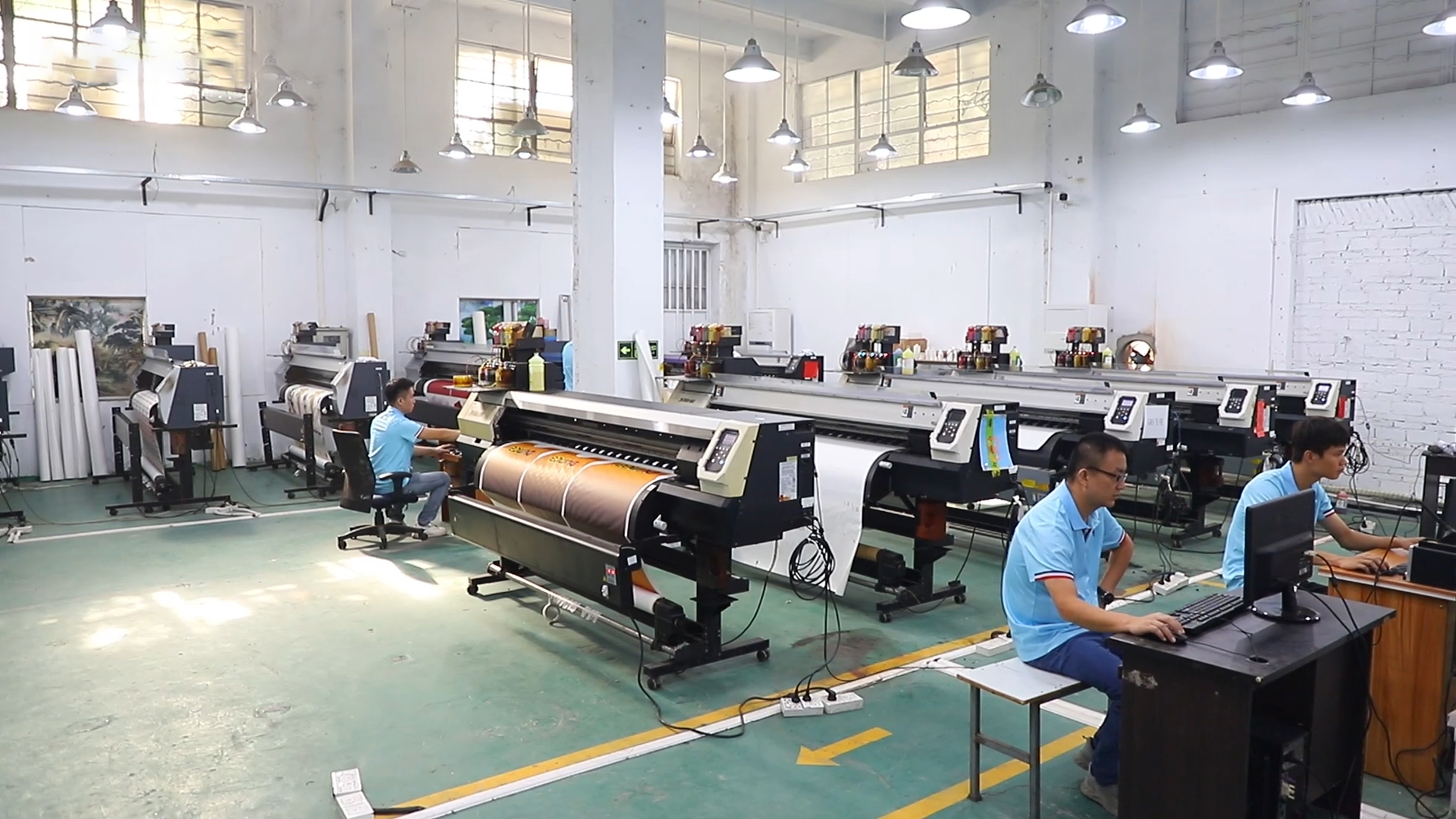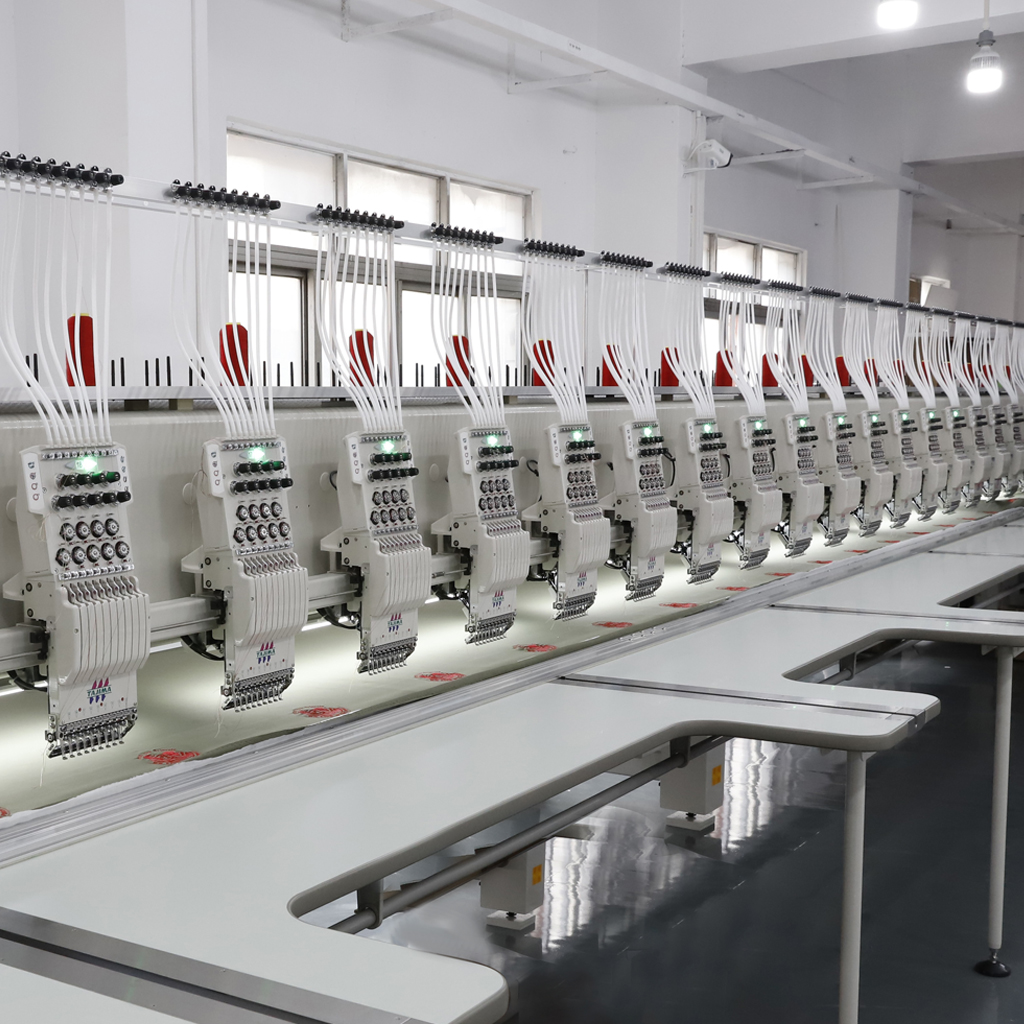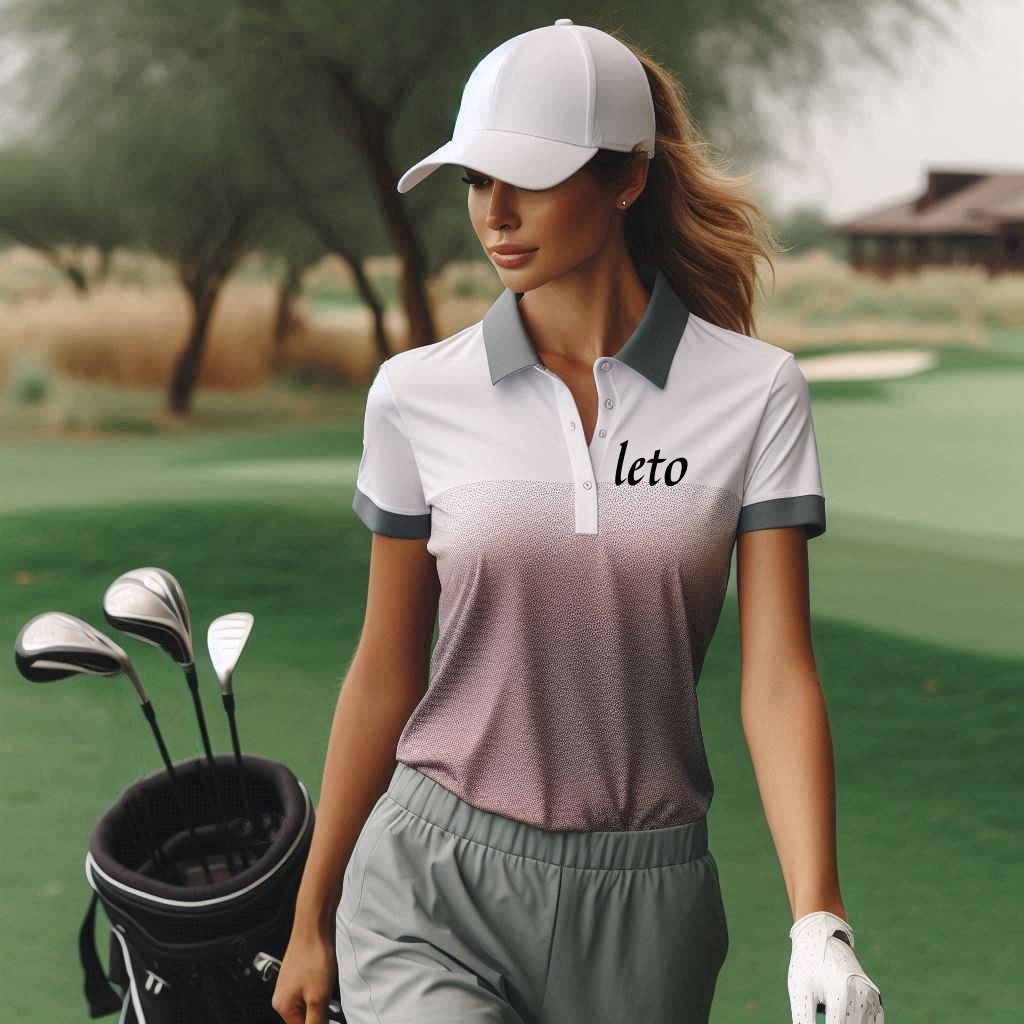Current State and Trends of the Golf Apparel Market
Golf, as a sport that combines elegance and competition, has shown significant growth globally in recent years. According to relevant data, the global golf apparel market is steadily expanding and is expected to continue this upward trend in the coming years. This growth is attributed to the increasing popularity of golf as a sport and the rising demand from consumers for high-quality, functional golf apparel.

With improvements in living standards, consumers' expectations for golf apparel have shifted from merely basic functionality to a greater emphasis on quality, design, functionality, and sustainability. They want to project a professional image on the golf course while enjoying comfortable wear. For example, golf apparel with features like breathability, moisture-wicking, and sun protection is highly favored, and clothing made from eco-friendly materials is gradually becoming a market favorite. Additionally, the rise of younger consumers adds new energy to the golf apparel market, as they pursue more fashionable and personalized designs.
In this market context, whether it’s new golf apparel startups, personal brands, or procurement managers and fashion buyers, everyone faces the challenge of meeting diverse consumer needs. Choosing a golf apparel manufacturer that can provide efficient, high-quality custom design solutions has become key to standing out in the fierce market competition. Leto Golf Apparel Manufacturing Factory is such a trusted partner, dedicated to providing comprehensive services to help brands succeed in the marketplace.
Analysis of Traditional Mass Production Model
(1) Processes and Characteristics of Traditional Mass Production
The traditional mass production model has a long history in the golf apparel manufacturing field, with clear steps and characteristics. It begins with large-scale procurement of raw materials. Manufacturers purchase substantial quantities of fabrics and accessories at once, such as high-quality cotton and polyester for making golf shirts, along with buttons and zippers. This process typically involves transactions with long-term suppliers to ensure stable material supply and relatively low prices.
The production phase is marked by concentrated manufacturing. Factories arrange a large number of workers and equipment to operate in an assembly line according to a predetermined production schedule. For instance, in making golf pants, specialized workers handle each step: cutting fabric, sewing the pant legs, installing zippers, and finally ironing and packaging. This efficient division of labor allows for rapid product production. Standardized templates and processes are employed to ensure product consistency and quality stability.
This production model suits products with stable demand and large market volumes, such as classic styles and common colors and sizes of golf apparel. Traditional mass production can effectively meet the needs for basic white and black golf shirts and regular-sized golf pants due to relatively stable market demand. It is also applicable for large procurement orders, like uniforms for golf clubs or bulk purchases by major retailers for sale.

(2) Advantages
Traditional mass production excels in cost control. Large-scale procurement of raw materials allows manufacturers to obtain better prices, reducing the unit material cost. For example, purchasing 10,000 meters of fabric at once may lower the price per meter by 10% to 20% compared to smaller batch purchases. The economies of scale from concentrated production also lower production costs, as overhead costs like equipment depreciation and labor are spread out over each product.
High production efficiency is another significant advantage of traditional mass production. Assembly line work allows each worker to focus on their specific task, continually improving their skill level and speeding up production. Additionally, large-scale production maximizes equipment capacity, reducing idle time and improving utilization. For instance, an advanced sewing machine can produce hundreds of golf apparel pieces daily, and if demand is sufficient, the equipment can run continuously, greatly enhancing production efficiency.
Product quality remains stable and reliable. With standardized production processes and strict quality inspection protocols, every product is produced and inspected according to the same standards, ensuring consistency in quality. In the production of golf apparel, there are stringent requirements for sizing accuracy, sewing techniques, and fabric quality, which traditional mass production can meet effectively, thus reducing defect rates.
(3) Limitations
However, the traditional mass production model has notable limitations, the most prominent being a lack of flexibility. Once a production plan is set, it is difficult to adjust in a short time. If market demand suddenly changes, such as a popular golf apparel style shifting, or if a customer requests changes in order quantity and style, the traditional mass production model struggles to respond quickly. Adjusting the production plan requires considerable time and costs, including re-procuring raw materials and adjusting production equipment and processes.
Slow market response times are also a significant drawback of traditional mass production. The entire production cycle, from placing an order to delivery, often takes weeks or even months. In today’s rapidly changing market, this can easily lead to a disconnect between products and market demand. For example, if a new fabric or design trend suddenly becomes popular, manufacturers using traditional mass production might take a long time to bring new products to market, missing the optimal sales window.
Meeting small batch order demands is another pain point for traditional mass production. New golf apparel startups or personal brands often require small quantities for market testing or to meet specific customer needs. However, due to high fixed costs associated with traditional mass production, the cost per unit for small orders is typically higher, making pricing uncompetitive. Additionally, manufacturers are often unwilling to adjust large-scale production plans for small orders, making it challenging to meet such requests within the traditional model.
Interpretation of the Small-Batch Quick Response Production Model
(1) Concept and Operation of Small-Batch Quick Response
Small-batch quick response (QBQR) is an innovative production model that is gradually emerging in the golf apparel manufacturing field. It breaks away from traditional mass production norms by focusing on small order quantities, enabling rapid production responses. The core of this model lies in its sensitivity to market demands and quick reaction capabilities, allowing for the swift transformation of designs into actual products to meet customer personalization needs.
In terms of operation, the small-batch quick response model begins with rapid prototyping. When customers present new design requests, Leto Golf Apparel Manufacturing Factory quickly organizes a specialized design team, utilizing advanced design software and rich experience to complete initial design drafts in a short time. Subsequent close communication with customers optimizes and adjusts the design to ensure it aligns with customer expectations. Once the design is finalized, the factory immediately begins the prototyping process using high-precision sampling equipment and skilled technicians to produce samples rapidly. This process typically takes only a few days, significantly reducing prototyping time compared to traditional production models.
Small-batch production is a key aspect of the QBQR model. After sampling and receiving customer approval, the factory produces small batches according to order quantities. With smaller orders, the factory can arrange production schedules more flexibly and adopt more refined production processes to ensure the quality of every product. Advanced production equipment and automated production lines enhance efficiency while strictly controlling every production phase from raw material procurement to product processing and inspection, ensuring that products meet high-quality standards.
Rapid replenishment is also an important component of the QBQR model. When market demand for a specific product surges, the factory can quickly respond and organize production to replenish stock in a short time. This efficiency stems from the factory's effective supply chain management and production coordination capabilities, enabling timely allocation of raw materials and production resources to meet market needs. Through rapid replenishment, businesses can seize market opportunities, increase sales, and enhance customer satisfaction and loyalty.

(2) Unique Advantages
The small-batch quick response model excels at meeting individual customer needs. As consumer demand for personalized golf apparel continues to grow, traditional mass production struggles to meet diverse market demands. The QBQR model can customize production of various styles, colors, and sizes based on customer requests, even adding unique logos or patterns to garments. For some golf clubs, they can create uniforms with club logos and member names, showcasing the club's identity; for individual consumers, they can select unique designs and fabrics to create their own exclusive garments.
Lowering inventory risk is another highlight of the small-batch quick response model. In traditional mass production, companies need to produce large quantities of products in advance to meet market demands through inventory. This creates risks of overstocking, as changes in market demand may leave products unsold, leading to financial losses. The small-batch quick response model, however, uses on-demand production, only manufacturing after receiving orders, thus avoiding significant inventory buildup. Companies can produce according to actual market needs, reducing inventory management costs and risks while improving capital efficiency.
Rapidly adapting to market changes is one of the core competitive advantages of the small-batch quick response model. In today’s fast-changing market environment, consumer demands and fashion trends are constantly evolving. Businesses need the ability to quickly adapt to these changes. Due to its short production cycles and high flexibility, the QBQR model can swiftly respond to market shifts. For example, when a new fabric or design trend emerges, companies using the QBQR model can quickly produce corresponding products, capturing market opportunities, while those using traditional mass production may take much longer to launch new products, missing optimal sales windows.
(3) Success Stories
Take a new golf apparel brand as an example; in its early stages, it adopted the small-batch quick response model for production. Through market research and data analysis, they keenly identified a demand among young consumers for fashionable, personalized golf apparel. They partnered with Leto Golf Apparel Manufacturing Factory to launch multiple new designs each month, with production quantities for each design kept to a few hundred pieces. These new products quickly gained popularity among young consumers, with sales steadily increasing. When a particular item became a bestseller, the factory could swiftly replenish stock to meet market demand. This approach allowed the brand to rise rapidly within a few years, becoming a well-known name in the golf apparel market, with its market share consistently expanding.
Another well-known golf apparel brand, facing increasing market competition, also adopted the small-batch quick response model for production. They established a long-term cooperative relationship with Leto Golf Apparel Manufacturing Factory to jointly develop new products. The factory quickly prototyped and produced according to the brand's needs, ensuring new products could be launched to market in a timely manner. Through the QBQR model, the brand could quickly respond to market changes and release products that met consumer needs while also minimizing inventory risks and improving capital efficiency. In recent years, the brand's sales have maintained steady growth, and its recognition and reputation have continually improved.
These success stories fully demonstrate the feasibility and advantages of the small-batch quick response model in the golf apparel manufacturing field. It not only helps businesses meet consumer demands for personalization, reduce inventory risks, and quickly adapt to market changes but also enhances corporate competitiveness and promotes sustainable development.
Leto's Customized Solutions for Golf Apparel Manufacturing
- Printing, Embroidery Equipment, and OEM/ODM Services

Leto's golf apparel manufacturing facility is equipped with comprehensive printing and embroidery equipment, capable of meeting various complex design needs. We have advanced digital printing machines that use high-precision nozzles to achieve delicate color transitions and clear pattern printing, whether it's intricate floral designs or complicated geometric shapes, everything is presented accurately. Our heat transfer equipment is another significant advantage, allowing patterns to be transferred onto fabric through high temperature and pressure, resulting in vibrant colors that are long-lasting and resistant to fading. In terms of embroidery, our multi-head embroidery machines can operate multiple needles simultaneously, completing various embroidery techniques quickly, such as flat embroidery, 3D embroidery, and appliqué, adding unique textures and decorative effects to the apparel.

We offer professional OEM/ODM services. In our OEM services, clients can provide their own design drawings and brand logos, and we produce according to their requirements. From fabric procurement, cutting, and sewing to final packaging and shipping, every step strictly follows the client’s standards and requirements to ensure product quality and consistency. In ODM services, our professional design team provides a one-stop solution from design concepts and sample production to mass production, based on clients' needs and market trends. We have a deep understanding of the trends in golf apparel and consumer demands, enabling us to offer innovative and competitive design solutions.
- Meeting Diverse Needs
Whether it's a startup or an established enterprise, Leto can meet diverse needs. For startups, they often face limited funds and uncertain market demands. Leto's small-batch quick response model perfectly fits their needs, helping them reduce inventory risks and quickly respond to market changes. Startups can conduct small batch trials to assess market feedback on their products and adjust and replenish according to market demand, avoiding large capital accumulation and waste. We also provide design advice and brand building support to help them create a unique brand image and establish a foothold in the market.
For established enterprises, they place greater emphasis on product quality and production efficiency. With advanced production equipment, a strict quality control system, and efficient production processes, Leto provides high-quality products and large-scale production services to established companies. We build long-term stable partnerships with these enterprises, thoroughly understanding their brand philosophy and product needs to offer personalized solutions. During the production process, we strictly control the quality at every step to ensure products meet international standards and client requirements. We also enhance production efficiency and reduce delivery times through optimized production processes and supply chain management to meet the demands for rapid market response from established enterprises.
- Service Spirit and Value Creation
Leto always adheres to a meticulous service spirit, striving to excel in every step from customer inquiries and order processing to after-sales service. During the customer inquiry phase, our professional customer service team patiently answers questions, understands client needs and expectations, and provides detailed product information and solutions. In the order processing stage, we communicate with clients about order progress, ensuring they are always updated on the production status. If a client has special requests or needs to modify an order, we actively cooperate to meet their needs.
Creating value for clients is Leto's original intention. By offering design advice, we help clients develop more competitive products. Our design team conducts in-depth research on market trends and consumer demands, combining client brand positioning and target audience to provide innovative design solutions that help products stand out in the market. Throughout the production process, we continually optimize production flows and reduce costs to provide clients with cost-effective products. We collaborate closely with suppliers to optimize procurement channels and lower raw material costs; by introducing advanced production technologies and management methods, we increase production efficiency and minimize waste during production. We also provide one-stop services to reduce communication and time costs for clients, allowing them to focus on brand promotion and market expansion.
How to Choose the Right Production Model
- Considerations for Startups
For startup golf apparel companies, funding is often a critical constraint. When choosing a production model, it's essential to consider their financial situation thoroughly. The small-batch quick response model, due to its smaller production scale and relatively low upfront investment, is an ideal choice for startups with limited funds. They can reduce production costs and inventory risks through small batch production, channeling limited funds into brand promotion and market development.

Uncertainty in market demand is another challenge startups face. In the early market stages, startups have limited understanding of consumer needs and market reactions; adopting a small-batch quick response model allows them to quickly adapt to market changes and adjust product designs and production plans based on feedback. If a particular garment is well-received in the market, they can quickly increase production; if sales are poor, they can halt production promptly to avoid excess inventory.
Brand positioning is also crucial. If a startup aims to build a personalized, fashionable golf apparel brand catering to niche markets, the small-batch quick response model better realizes this positioning. By collaborating with Leto's golf apparel manufacturing facility, startups can customize unique designs and use high-quality fabrics, creating products that align with their brand identity and establishing a distinct brand presence in the market.
- Decision Points for Individual Consumers and Purchasing Managers
For individual consumers selecting golf apparel, product quality is the primary focus. High-quality materials, precise stitching, and good fit ensure comfort and durability during wear. Consumers can assess product quality by reviewing material composition, workmanship details, and brand reputation. For instance, garments made from high-quality polyester and spandex blends offer excellent breathability, moisture-wicking, and elasticity, meeting the demands of golf activities.
Price is also a factor that individual consumers need to consider. While ensuring quality, consumers hope to purchase products that offer good value. There can be significant price differences among various brands and styles of golf apparel, allowing consumers to choose based on their budget. Some well-known golf apparel brands may have higher prices, but they offer more assurance in quality and design; meanwhile, emerging or niche brands might provide more cost-effective options.

For individual consumers with special requests, custom services become particularly important. For example, consumers can have garments tailored to their body measurements or add personal logos or designs to make them more unique. Leto's golf apparel manufacturing facility offers custom services to meet these specific needs, creating exclusive golf apparel for them.
When purchasing golf apparel for a company, purchasing managers need to consider not only product quality and price but also the supplier's production capacity and delivery time. Stable production capacity and on-time delivery are key to ensuring smooth business operations. Purchasing managers should be familiar with the supplier's production equipment, processes, and workforce quality to ensure they can meet the company's procurement needs. If a company needs to procure a large quantity of golf apparel quickly for events or sales, the supplier must have sufficient production capacity and efficient processes to ensure timely delivery.
Custom services are also vital for purchasing managers. Companies may need to print their logos, slogans, or event themes on the apparel to meet branding and promotional needs. Purchasing managers can communicate with Leto’s golf apparel manufacturing facility to understand the specifics of their custom services and processes to ensure they can fulfill the company’s requirements. Additionally, purchasing managers should consider the supplier’s after-sales services, such as handling product quality issues and return policies, to protect the company's interests.
- Strategies for Fashion Buyers
For fashion buyers procuring golf apparel, establishing a good cooperative relationship with suppliers is crucial. Through in-depth communication, fashion buyers can learn about suppliers' product characteristics, production capabilities, design teams, and more, enabling better product selection. When collaborating with Leto's golf apparel manufacturing facility, fashion buyers can participate in the product design process, offering their suggestions and ideas to ensure that products align with market demands and fashion trends. Fashion buyers can also negotiate prices, delivery times, and quality guarantees with suppliers to secure more favorable cooperation terms.

Selecting suitable products is the core task of fashion buyers. This requires them to have keen fashion insights and market analysis skills. They need to keep an eye on trends in golf apparel, understanding consumer preferences and demands to choose products with market competitiveness. For example, currently popular golf apparel styles include minimalist designs and eco-friendly materials, as well as innovative designs that could become bestsellers. Fashion buyers should also consider product diversity, covering different styles, colors, and sizes to meet various consumer needs.
Establishing long-term stable cooperative relationships is also very important for fashion buyers. Working with reliable suppliers can ensure product quality and supply stability while reducing procurement costs and risks. Fashion buyers can sign long-term cooperation agreements with suppliers, clarifying both parties' rights and obligations to jointly address market changes and challenges. Through long-term collaboration, fashion buyers and suppliers can build mutual trust, achieving a win-win situation.
Conclusion

Both small-batch quick response and traditional mass production models have their strengths, holding significant positions in the golf apparel manufacturing sector. The small-batch quick response model, with its flexibility, rapid market response, and ability to meet personalized needs, provides an ideal choice for startup golf apparel companies, personal brands, and clients seeking fashion innovation. Conversely, the traditional mass production model plays an essential role in large-scale, standardized product manufacturing due to its cost control, production efficiency, and stable product quality.
Leto Golf Apparel Manufacturing is committed to providing customized design solutions. Whether through small-batch quick response or traditional mass production, we leverage advanced equipment, professional services, and extensive experience to meet diverse client needs. We understand that every client has unique requirements and goals, so we offer personalized suggestions and solutions based on their specific situations to help them make the best choices.
If you are considering entering the golf apparel market or seeking a higher quality apparel manufacturing partner, we hope you will fully consider your needs and market conditions to choose the production model that suits you best. Leto Golf Apparel Manufacturing is dedicated to serving you and working together to create a bright future.
Post time: 25-03-13








